Shopify Marketing Strategies
10 Proven Strategies to Skyrocket Your Success 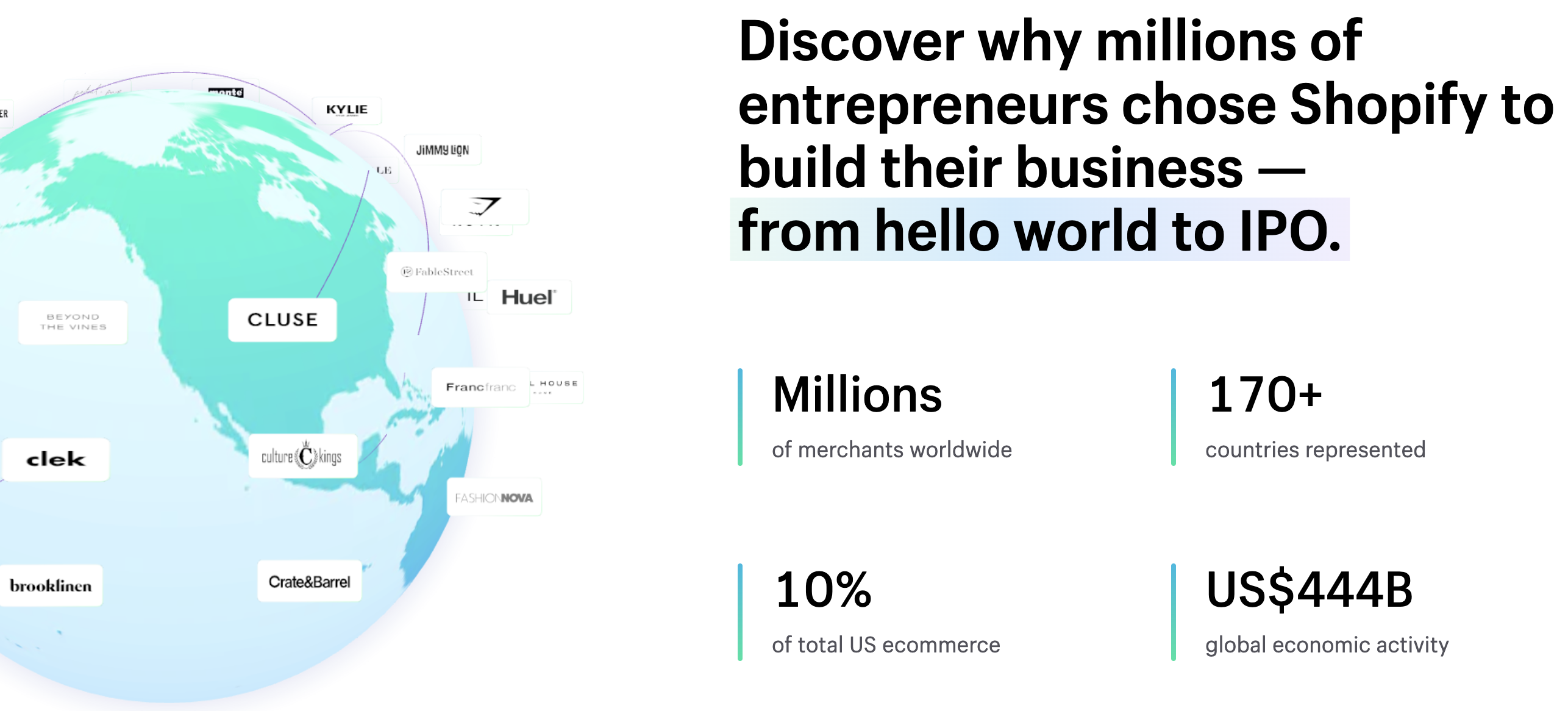
Shopify has made it easier than ever to launch an online store. However, getting customers to find your store and convincing them to make a purchase is another challenge altogether. With the growing number of e-commerce stores, standing out in the crowded market is essential. To help you thrive, here are 10 proven Shopify marketing strategies that can take your store to the next level.
Click on each corresponding link to jump ahead:
If you have any further questions regarding Shopify marketing strategies, contact us!
1. Use Pay-Per-Click (PPC) Advertising for Shopify
PPC advertising remains one of the most direct methods to drive targeted traffic to your Shopify store. Platforms like Google Ads, Bing Ads, and even social media platforms like Facebook and Instagram offer PPC options tailored for e-commerce platfo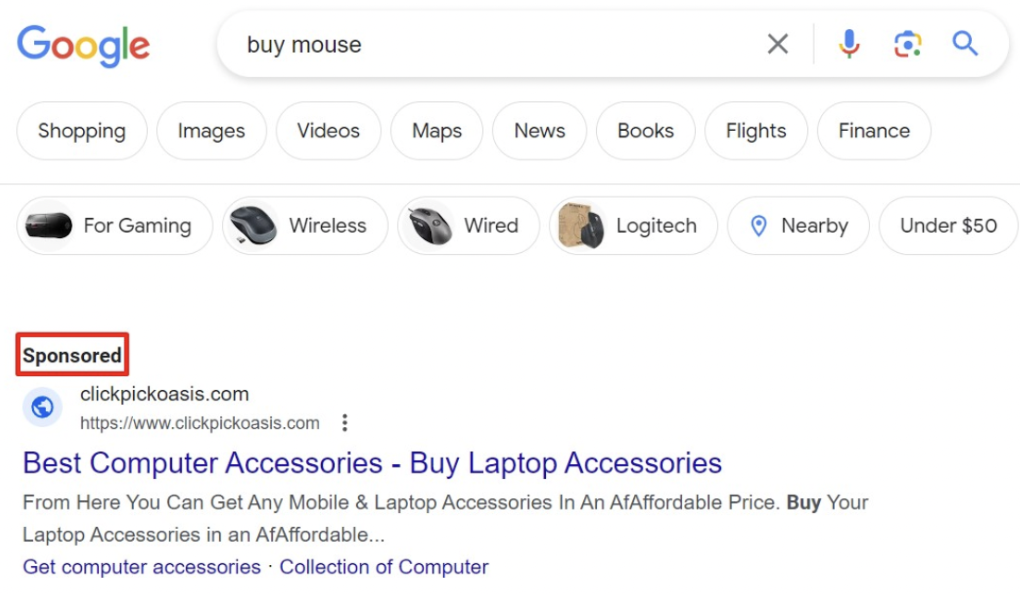
Google Ads (Search).
For Shopify merchants, PPC can be particularly advantageous. However, effectively harnessing the power of pay-per-click advertising requires expertise, which is why many store owners turn to professional Shopify PPC management services to create and optimize their campaigns.
Why Invest in PPC for Shopify?
With PPC, you can target specific keywords or demographics, ensuring that your ads appear to potential customers who are actively searching for products you offer. It provides an immediate influx of visitors, unlike organic methods which can take time to yield results.
Moreover, the direct ROI is easily measurable. By monitoring which keywords and ads are converting the highest, you can adjust your budget and strategy accordingly, ensuring optimal ad spend.
Tips for Effective PPC on Shopify
Executing a PPC campaign may sound straightforward, but there are several nuances you should consider for maximum impact. Here's an expanded look into effective PPC strategies for Shopify merchants:
-
Keyword Research: The foundation of a successful PPC campaign lies in understanding which keywords potential customers are using to search for products like yours. Tools like Google's Keyword Planner or SEMrush can offer valuable insights into search volume, competition, and even the potential cost per click for specific keywords.
-
Ad Creatives: The visual and textual elements of your ads need to be compelling to attract clicks. A/B testing different headlines, descriptions, and images can help you determine what resonates most with your target audience.
-
Landing Page Optimization: Once a user clicks on your ad, the landing page they are directed to should match the promise of the ad. The design should be clean, the call-to-action should be clear, and the load time should be quick. Ensuring a cohesive user experience from the ad click to landing page can significantly improve conversion rates.
-
Campaign Structuring: An organized campaign structure will allow for better tracking and optimization. Group similar keywords together in one ad group, use separate campaigns for different product categories, and make sure to align your ad groups with corresponding landing pages.
-
Budget and Bidding Strategy: It’s essential to set an appropriate budget and bidding strategy. Automatic bidding can be useful when you're starting out, but as you collect data, you may find that manual bidding offers more control to achieve a higher ROI.
-
Audience Targeting: PPC platforms offer various options to target audiences based on demographics, geography, interests, and more. Taking time to set these parameters can increase the likelihood of your ads reaching potential customers.
-
Performance Tracking and Optimization: Continuous monitoring of your campaigns is essential for success. Use tracking tools to measure metrics like click-through rates (CTR), conversion rates, and return on ad spend (ROAS). Constantly optimize based on these insights to maximize returns. You can also use such an advertising technique as retargeting. With retargeting, you show ads to users who have previously visited your site but didn't make a purchase. Tailor your ads based on the products they viewed, offering discounts or highlighting product benefits.
Incorporating PPC into your Shopify marketing strategy can provide a significant boost in sales, especially during peak seasons or promotional periods. While it does require an initial investment, the potential returns, when executed correctly, are well worth it.
2. Leverage the Power of SEO
Search Engine Optimization (SEO) is crucial in ensuring that your Shopify store ranks high on search engines, making it easier for customers to find you.
Optimize Product Descriptions
Crafting unique product titles and detailed descriptions enriched with keywords can significantly boost your product pages' visibility. Avoid generic descriptions. Instead, try to answer potential customer queries within the content. For example, material, care instructions, and usability can be great points to touch upon.
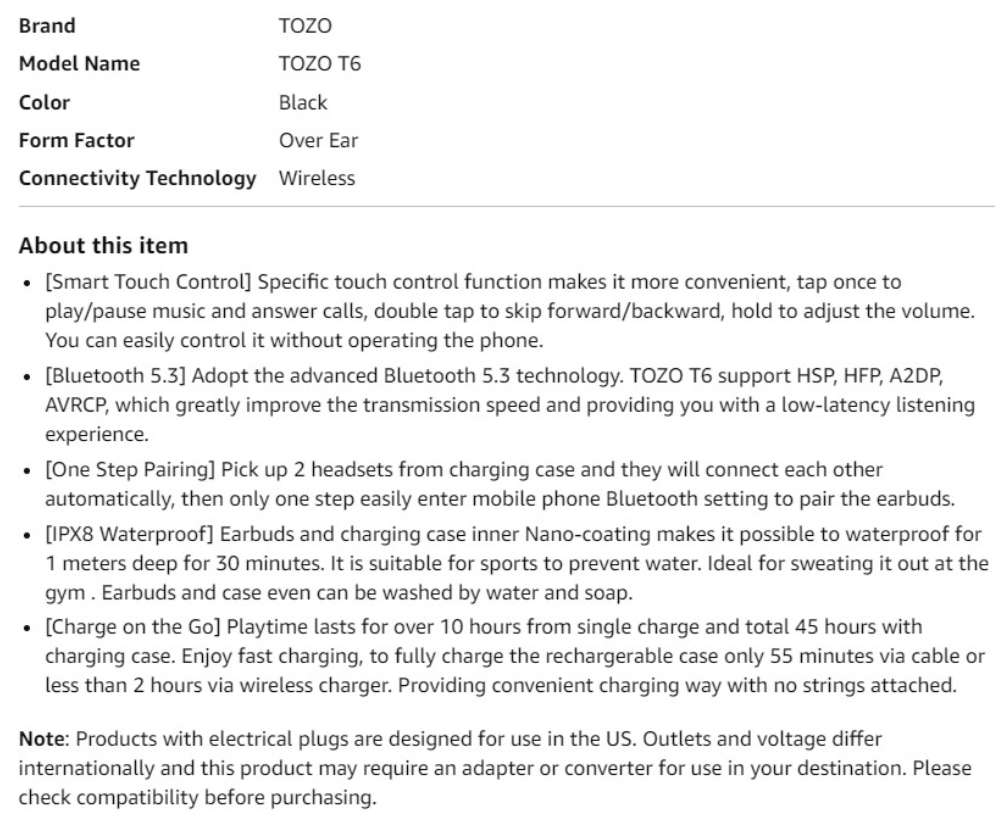
Example of Good Description (Wireless Earbuds).
Improve Site Speed
A sluggish site can lead to cart abandonment. Google also considers site speed when ranking, so it's a double incentive to get it right. Besides optimizing images and using lightweight themes, consider using content delivery networks (CDN) and minimizing the use of heavy apps that slow down page load times.
Tips for Effective SEO on Shopify
Consider the following tips on how to effectively use SEO on Shopify:
-
Keyword Research: Start with thorough keyword research. Identify relevant keywords and phrases that potential customers might use to search for products or services you offer.
-
Optimize Product Titles and Descriptions: Use your target keywords in product titles and descriptions. Make sure these are descriptive, unique, and compelling.
-
Clean URL Structure: Shopify allows you to customize URLs. Keep them clean, concise, and include relevant keywords.
-
Image Optimization: Use descriptive file names for your product images and include alt text. This helps with both SEO and accessibility.
-
Page Speed Optimization: A fast website not only improves user experience but also SEO rankings. Use tools like Google PageSpeed Insights to identify and fix issues.
-
Mobile Optimization: Ensure your Shopify store is mobile-friendly. Google prioritizes mobile-friendly websites.
-
Structured Data Markup: Implement structured data (schema markup) to provide search engines with additional information about your products, like reviews, price, and availability.
-
User-Friendly Navigation: Make sure your website's navigation is user-friendly. Easy navigation improves the user experience and indirectly affects SEO.
-
Quality Content: Regularly update your blog with high-quality, relevant content. Blog posts can rank for long-tail keywords and drive organic traffic.
-
Internal Linking: Use internal links to guide users to related products or content. This helps distribute link equity across your site.
-
External Link Building: Build high-quality backlinks from reputable websites in your niche. Guest posting, influencer collaborations, and content marketing can help.
-
Customer Reviews: Encourage customers to leave reviews and ratings. Positive reviews can lead to higher click-through rates.
-
Social Media Integration: Share your products on social media platforms. Social signals can indirectly influence SEO rankings.
-
Optimize Meta Tags: Write compelling and keyword-rich meta titles and descriptions for your pages.
-
Regular Monitoring: Use Google Analytics and Google Search Console to monitor your site's performance and identify areas for improvement.
-
Local SEO: If you have a physical store, optimize for local SEO. Include your location in key places like the footer, meta tags, and content.
Remember that SEO is an ongoing process, and it can take time to see results. Stay updates with the latest SEO trends and continuously work on optimizing your Shopify store to improve you ranking in search engine results.
3. Embrace Email Marketing
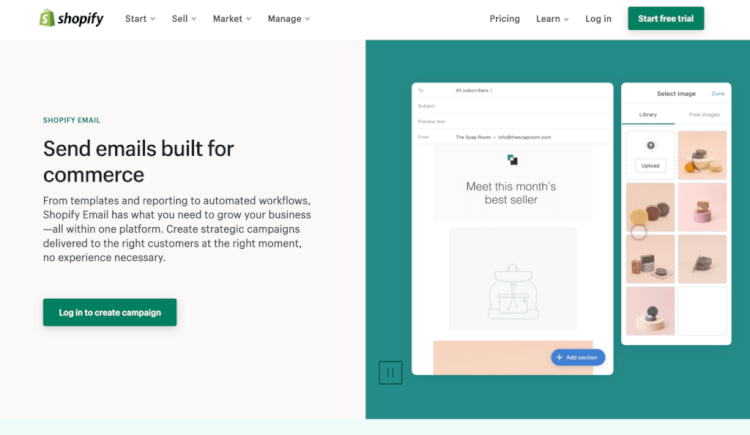
Email marketing is a cost-effective marketing strategy.
Email remains one of the most effective channels to connect with your audience directly.
Create an Engaging Newsletter
Your newsletter is a direct line to your customers. Regular updates about new products, special offers, or company news can keep your brand at the forefront of their minds. Use visually appealing templates and strong CTAs.
Abandoned Cart Recovery
Studies show that almost 70% of shopping carts are abandoned. By setting up automated reminders for these potential buyers, you can recapture some of those lost sales. Make your email persuasive with a compelling subject line and maybe even a special discount.
Tips for Effective Email Marketing on Shopify
Effective email marketing can be a powerful tool for boosting sales and customer engagement on your Shopify store. Here are some tips for successful email marketing on Shopify:
-
Segment Your Email List: Divide your email list into segments based on customer behavior, preferences, and demographics. This allows you to send targeted and relevant emails.
-
Personalize Your Emails: Use the recipient's name in the email, and tailor the content to their past purchase history and interests. Personalized emails tend to perform better.
-
Abandoned Cart Emails: Set up automated abandoned cart email sequences to remind customers of items left in their cart and encourage them to complete their purchase.
-
Welcome Series: Create a welcome email series for new subscribers. Use this opportunity to introduce your brand, offer a discount, and set expectations for future emails.
-
Product Recommendations: Utilize product recommendation algorithms to suggest products based on the customer's browsing and purchase history.
-
Promotional Emails: Run special promotions, discounts, and sales campaigns. Notify your email subscribers first to create a sense of exclusivity.
-
A/B Testing: Test different subject lines, email copy, and CTAs to determine what resonates best with your audience. Use the results to refine your email campaigns.
-
Clear Call to Action (CTA): Make your CTA buttons clear, visually appealing, and action-oriented. Encourage recipients to click through to your website.
-
Timing: Send emails at the right time for your audience. Test different sending times to find out when your subscribers are most active and responsive.
-
Unsubscribe Option: Make it easy for recipients to unsubscribe if they wish. It's better to have a smaller, engaged list than to irritate uninterested recipients.
-
Analytics and Tracking: Monitor the performance of your email campaigns using analytics tools provided by Shopify or third-party services. Adjust your strategy accordingly.
-
Feedback and Surveys: Collect feedback from your customers through email surveys. This can help you improve your products and services.
-
Post-Purchase Emails: Send post-purchase emails with order confirmations, shipping updates, and requests for reviews. These emails can also include upsell or cross-sell opportunities.
By following these email marketing best practices, you can effectively engage your audience, drive sales, and build lasting customer relationships through your Shopify store.
4. Social Proof and Reviews
Trust is a huge factor in online shopping, and this is where social proof comes into play.
Showcase Customer Reviews
Displaying honest customer reviews, both positive and critical, can greatly influence purchase decisions. Use apps that allow for photo reviews for added authenticity.
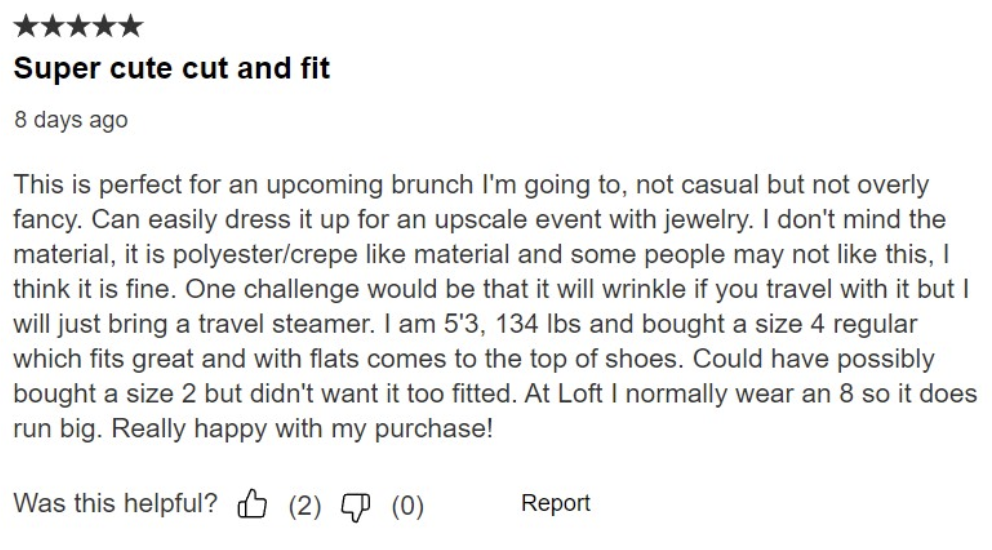
Reviews can help other customers in decision making.
Tips for Effective Social Proofs/Reviews on Shopify
Social proof and reviews play a crucial role in building trust with potential customers and driving sales on your Shopify store. Here are some tips for effectively implementing social proof and reviews on your Shopify store:
-
Customer Reviews and Ratings: Allow customers to leave reviews and rate your products. This provides valuable feedback and builds trust with potential buyers.
-
Display Reviews Prominently: Showcase customer reviews prominently on product pages, near the product description and images, so they are easy for visitors to find.
-
Product Photos in Reviews: Encourage customers to upload photos with their reviews. Visual proof of the product's quality can be very persuasive.
-
Moderate Reviews: Moderate reviews to filter out spam and inappropriate content, but avoid censorship of legitimate opinions, even if they are negative.
-
Aggregate Ratings: Display an aggregate rating (average rating) for each product. This gives a quick overview of product quality.
-
Review Request Emails: Automatically send emails to customers after a purchase, requesting them to leave a review. Make it easy with a direct link.
-
Incentives: Consider offering incentives, such as discounts or loyalty points, to customers who leave reviews. However, ensure this is done ethically and within legal guidelines.
-
Verified Buyer Badges: Implement a "Verified Buyer" badge next to reviews from customers who have actually purchased the product.
-
Rich Snippets: Implement structured data markup (schema) to enable rich snippets in search engine results, which can display star ratings and other review details.
-
Third-Party Review Platforms: Consider using third-party review platforms like Trustpilot, Yelp, or Google Reviews, and integrate them with your Shopify store.
-
Response to Reviews: Engage with your customers by responding to reviews, both positive and negative. Show that you value their feedback and are willing to address issues.
-
Review Request Timing: Time your review request emails appropriately. Send them after customers have had a chance to use the product but not so long that they forget the experience.
-
Social Proof Widgets: Use social proof widgets that display real-time information about recent sales, such as "X people bought this product in the last hour."
-
Leverage UGC: Encourage and feature user-generated content (UGC) on your website and social media. Share customer photos and stories related to your products.
-
Highlight Testimonials: Create a dedicated page or section for customer testimonials, where you showcase glowing reviews and success stories.
-
Video Testimonials: Encourage customers to provide video testimonials. These are often more persuasive and engaging than written reviews.
-
Trust Seals: Display trust seals, badges, and industry certifications to reassure customers of your store's credibility and security.
-
Mobile-Friendly Design: Ensure that your social proof and reviews display well on mobile devices, where a significant portion of your traffic may come from.
-
A/B Testing: Experiment with different ways of presenting reviews and social proof to see what works best for your specific audience.
-
Privacy and Data Security: Assure customers that their data and reviews are secure and won't be misused.
By effectively implementing these social proof and review strategies, you can boost your credibility, build trust with potential customers, and ultimately increase conversions on your Shopify store.
5. Engage with Content Marketing
Content can position your brand as a thought leader in your industry. In the realm of content marketing, integrating successful marketing ideas such as how-to guides, customer testimonials, and video tutorials can significantly elevate your brand's authority and customer engagement.
Start a Blog
Blogging about topics related to your niche attracts organic traffic. It can also educate potential customers, moving them closer to a purchasing decision. Keep your blog updated and promote posts across your social channels.

Instagram Blog of a Turkish Jewelry Brand.
Tips for Effective Content Marketing on Shopify
Content marketing is a powerful way to attract, engage, and retain customers on your Shopify store. Here are some tips for effective content marketing on Shopify:
-
Understand Your Audience: Begin by understanding your target audience's needs, preferences, and pain points. Create content that speaks to their interests and concerns.
-
Content Strategy: Develop a well-defined content strategy. Determine the types of content you'll create, the topics you'll cover, and the goals you want to achieve.
-
Quality over Quantity: Focus on creating high-quality, valuable content rather than churning out large quantities of content. High-quality content is more likely to resonate with your audience.
-
Blog Posts: Start a blog on your Shopify store. Regularly publish informative, relevant, and engaging blog posts. Use these posts to educate your audience and showcase your expertise.
-
Visual Content: Incorporate visual content like images, infographics, and videos to make your content more appealing and shareable.
-
SEO Optimization: Optimize your content for search engines. Use relevant keywords, meta tags, and a clean URL structure to improve your content's visibility in search results.
-
Guest Blogging: Consider guest posting on other reputable blogs or inviting industry experts to guest post on your blog. This can expand your reach and authority.
-
Social Media Promotion: Share your content on social media platforms to reach a wider audience. Use eye-catching visuals and engaging captions.
-
User-Generated Content (UGC): Encourage customers to create and share content related to your products. Repost their content to showcase real-life use and experiences.
-
E-books and Guides: Create downloadable e-books and guides that provide in-depth information on topics relevant to your products or industry. Collect email addresses in exchange for these resources.
-
Case Studies: Share customer success stories and case studies. Highlight how your products or services have solved real problems for your customers.
-
FAQs and How-To Guides: Address common questions and problems your customers have with informative FAQs and how-to guides.
-
Webinars and Podcasts: Host webinars, podcasts, or live Q&A sessions related to your industry. These can position you as an authority in your niche.
-
Interactive Content: Develop interactive content like quizzes, surveys, or calculators to engage your audience and collect data.
-
Feedback and Comments: Encourage and respond to comments and feedback on your content. Engaging with your audience builds a sense of community.
-
Analytics and Optimization: Regularly analyze the performance of your content. Use data to refine your strategy and create more of what works.
Effective content marketing can help you build brand authority, drive organic traffic, and establish a loyal customer base. Tailor your content to the unique needs of your audience and keep experimenting to refine your strategy over time.
6. Implement a Referral Program
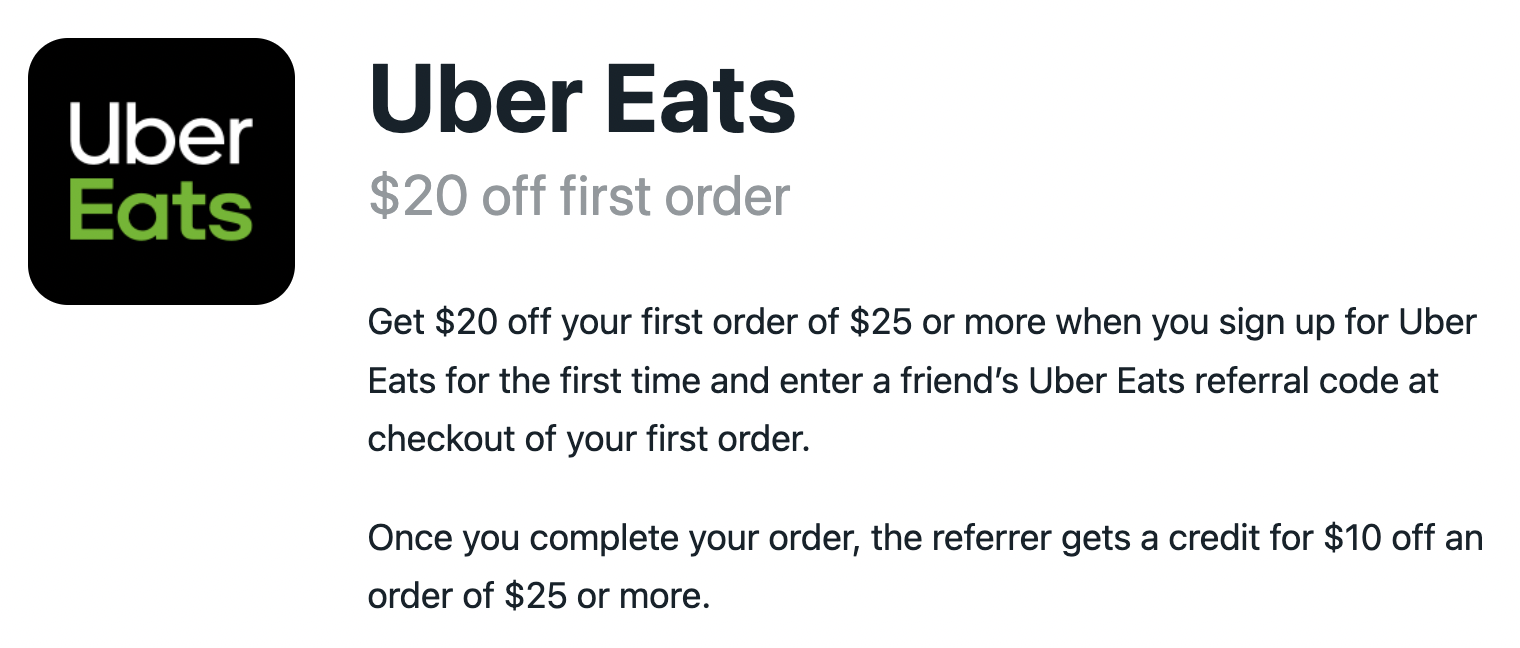
Even the most popular businesses have referral programs.
At the end of the day, word of mouth remains one of the most trusted forms of marketing.
Tips for Creating an Effective Referral Program on Shopify
Creating an effective referral program on your Shopify store can be a powerful way to acquire new customers and build brand loyalty. Here are some tips to help you set up and run a successful referral program:
-
Clear and Compelling Incentives: Offer attractive incentives to both the referrer and the referee. These could be discounts, cash rewards, free products, or store credits. Make the benefits clear and enticing.
-
Easy-to-Understand Program: Ensure that the referral program's terms and conditions are easy to understand. Avoid overly complex rules that might confuse your customers.
-
Seamless Integration: Use Shopify's built-in tools or third-party apps to seamlessly integrate the referral program with your store. The process of referring and redeeming rewards should be intuitive.
-
Prominent Promotion: Prominently display information about the referral program on your website. This can include banners, pop-ups, or a dedicated page.
-
Automated Tracking: Automate the tracking and reward distribution process. Shopify apps like ReferralCandy or Smile.io can help with this.
-
Customizable Referral Links: Provide each customer with a unique referral link that they can easily share with friends and family. Personalized links make tracking easier.
-
Social Sharing: Allow customers to share their referral links via social media and email directly from your store. Make it easy for them to spread the word.
-
Email Campaigns: Send targeted email campaigns to inform customers about your referral program and encourage participation.
-
Landing Page for Referrals: Create a dedicated landing page where potential referees can learn about the program and sign up.
-
Shareable Content: Develop shareable content such as videos, infographics, or testimonials that explain the benefits of your referral program.
-
Monitoring and Analytics: Track the performance of your referral program with analytics tools. Understand what's working and what needs improvement.
-
Timely Rewards: Ensure that rewards are delivered promptly once a referral's conditions are met. Delays can lead to a negative experience.
-
Customer Support: Offer excellent customer support to address any issues or questions related to the referral program.
-
Mobile-Friendly: Ensure the referral program is mobile-friendly as many customers access online stores through mobile devices.
-
Advocate Recognition: Acknowledge and celebrate your most successful referrers. Consider creating tiers or special rewards for top advocates.
-
Terms and Conditions: Clearly outline the program's terms and conditions, including any limitations or restrictions. Make sure customers know the rules.
-
Test and Optimize: Continuously test and optimize your referral program to improve its effectiveness. Experiment with different incentives and promotional strategies.
By following these tips, you can create an effective referral program that encourages your existing customers to spread the word about your store, ultimately driving more sales and increasing brand loyalty.
7. Influencer Partnerships

Create content with famous influencers!
Influencers can amplify your brand's message to a broader audience.
Tips for Establishing Influencer Partnerships on Shopify
Establishing influencer partnerships can be an effective way to expand your brand's reach and build trust with potential customers on your Shopify store. Here are some tips for establishing successful influencer partnerships:
-
Define Your Goals: Determine your objectives for the influencer partnership. Are you looking to increase brand awareness, drive sales, or gain more followers on social media? Clear goals will guide your selection process.
-
Identify Your Target Audience: Know your target audience and choose influencers whose followers align with your customer demographic. Quality is more important than quantity.
-
Research and Vetting: Research potential influencers thoroughly. Check their content quality, engagement rates, and the authenticity of their followers. Look for genuine influencers who have a real connection with their audience.
-
Understand Your Niche: Partner with influencers who have expertise and credibility within your niche or industry. This helps build trust with their followers.
-
Micro-Influencers: Consider working with micro-influencers (those with smaller but highly engaged followings). They often have more authentic relationships with their followers.
-
Relationship Building: Reach out to influencers personally. Start building a genuine relationship before discussing partnerships. Engage with their content and show interest in their work.
-
Clear Terms and Compensation: Clearly define the terms of the partnership, including deliverables, compensation, and expectations. Make sure both parties are on the same page.
-
Contracts: Always have a written agreement or contract that outlines the terms of the partnership, including usage rights for content created.
-
Content Guidelines: Provide influencers with guidelines for the content they create to ensure it aligns with your brand's values and messaging.
-
Creative Freedom: Allow influencers some creative freedom. Their followers follow them for their unique voice and style.
-
Compliance with FTC Guidelines: Ensure that influencer content complies with FTC guidelines for transparency and disclosure of sponsored content.
-
User-Generated Content: Encourage influencers to generate user-generated content. This content can be repurposed on your Shopify store and social media.
-
Collaborative Campaigns: Collaborate with influencers on campaigns or promotions. This can involve exclusive discount codes or giveaways for their followers.
-
Trackable Links and Codes: Provide influencers with unique trackable links or discount codes to measure the impact of their promotions.
-
Long-Term Relationships: Consider establishing long-term relationships with influencers rather than one-off partnerships. Building an ongoing partnership can lead to more authentic endorsements.
-
Promotion on Multiple Platforms: Ask influencers to promote your products on multiple platforms, such as Instagram, YouTube, and their blogs, for maximum exposure.
-
Engage with Their Audience: Encourage influencers to engage with their audience through comments and messages, answering questions about your products or brand.
-
Performance Metrics: Track the performance of influencer campaigns using metrics like website traffic, conversions, and sales. Adjust your strategy based on the results.
-
Gratitude and Appreciation: Show appreciation to your influencer partners through thank-you notes, gifts, and other tokens of gratitude for their collaboration.
-
Feedback and Continuous Improvement: Seek feedback from both influencers and your audience to improve future influencer partnerships.
Remember that building successful influencer partnerships takes time and effort, so be patient and willing to adapt your approach based on your experiences.
8. Upselling and Cross-selling
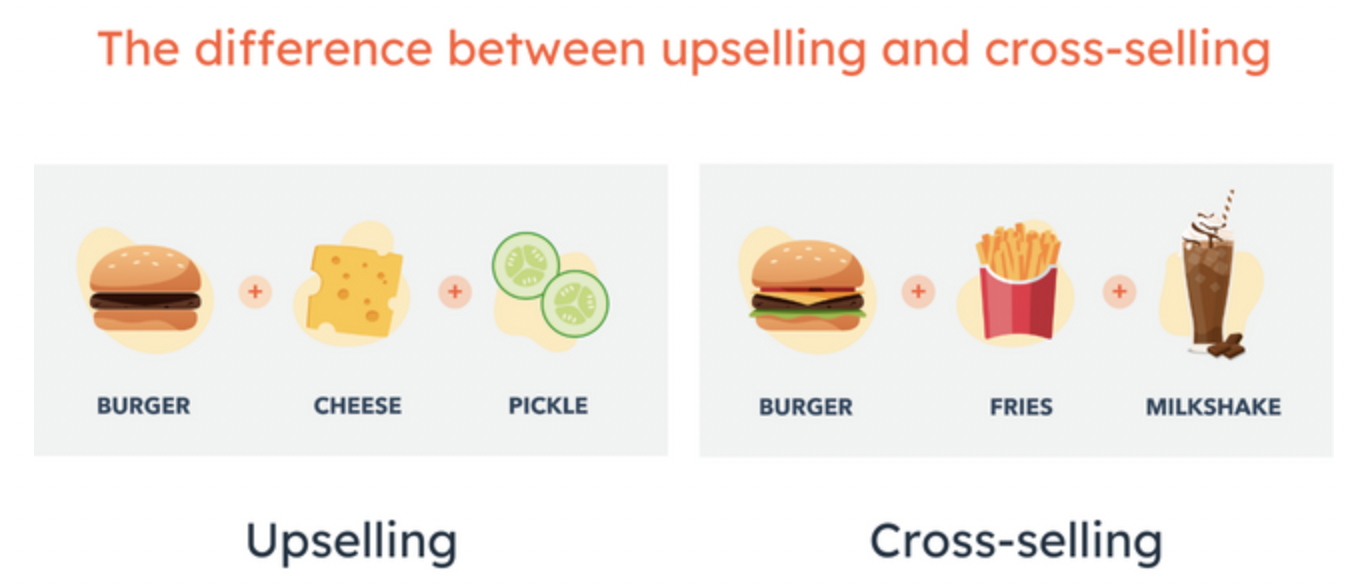
Upselling and cross-selling are very popular sales tactics.
Maximize the value from each transaction by promoting related or premium products.
Tips for Effective Upselling and Cross-selling on Shopify
Upselling and cross-selling are effective techniques to increase the average order value and boost sales on your Shopify store. Here are some tips for implementing these strategies effectively:
Upselling:
-
Strategic Placement: Showcase higher-priced or premium versions of products in strategic positions on your website, such as the homepage, product pages, or checkout.
-
Bundle Offers: Offer product bundles that include the original product and complementary items at a slightly discounted price, encouraging customers to buy more.
-
Product Recommendations: Use product recommendation apps to suggest higher-priced alternatives or add-ons on product pages based on the customer's selection.
-
Clear Value Proposition: Highlight the additional benefits or features of the upsell product. Explain why the customer should consider the upgrade.
-
Discounts and Promotions: Offer limited-time discounts or promotions for upsell products to make the deal more appealing.
-
One-Click Upsells: Implement one-click upsells in the checkout process to make it easy for customers to add higher-value items before completing their purchase.
Cross-Selling
-
Related Products: Display related or complementary products on product pages. For example, if someone is looking at a camera, show related accessories like tripods or memory cards.
-
Post-Purchase Recommendations: After a customer makes a purchase, suggest additional products that complement the one they just bought. These recommendations can appear on the order confirmation page or in follow-up emails.
-
Frequently Bought Together: Use the "Frequently Bought Together" feature to show customers what others typically purchase alongside the product they're viewing.
-
Customer Reviews: Include customer reviews and testimonials on product pages that mention how well the cross-sell products work together.
-
Discounts for Combos: Offer discounts for purchasing a bundle or a combination of products. Highlight the cost savings of buying together.
-
Personalized Recommendations: Use personalization tools to recommend cross-sell products based on the customer's browsing and purchase history.
-
Create Themed Collections: Organize products into themed collections or gift sets that make it easy for customers to see complementary items.
General Tips
-
A/B Testing: Continuously test different upsell and cross-sell strategies to see which ones resonate most with your customers.
-
Use Data and Analytics: Use data from your store to understand customer behavior and preferences. Identify the best-selling combinations and capitalize on them.
-
Customer Segmentation: Segment your audience based on their behavior and purchase history to offer tailored upsell and cross-sell recommendations.
-
Educational Content: Provide educational content or guides that explain the benefits of purchasing the additional products.
-
Mobile Optimization: Ensure that your upsell and cross-sell offers are mobile-friendly, as a significant portion of traffic comes from mobile devices.
-
Simplicity: Keep the upsell and cross-sell process simple and unobtrusive. Don't overwhelm customers with too many choices.
-
Customer Support: Offer excellent customer support to answer questions and concerns about the recommended products.
-
Post-Purchase Follow-Up: Follow up with customers after they've made a purchase to ask if they need any additional products or assistance.
By implementing these upselling and cross-selling strategies effectively, you can increase your sales, improve the customer experience, and make the most of each customer interaction on your Shopify store.
9. Utilize Multi-Channel Selling

Expand your reach beyond just Shopify and track your results along the way.
Expanding beyond your Shopify store can open up new avenues for revenue.
Tips for Utilizing Multi-Channel Selling
Expanding beyond Shopify and utilizing multi-channel selling can help you reach a wider audience and increase your sales. Here are some tips for successfully implementing multi-channel selling:
-
Research the Right Channels: Identify the most relevant channels for your business. Popular options include Amazon, eBay, Etsy, Walmart, social media platforms (e.g., Facebook, Instagram, Pinterest), and marketplaces like Google Shopping.
-
Diversify Your Product Listings: Tailor your product listings to match the requirements and expectations of each channel. Ensure that product titles, descriptions, and images are optimized for each platform.
-
Inventory Management: Implement inventory management software or tools to keep track of stock levels across all channels. This helps prevent overselling and backorders.
-
Unified Dashboard: Use e-commerce platforms or tools that offer a unified dashboard to manage multiple channels from one place. Shopify itself can integrate with some popular channels, and third-party solutions are available as well.
-
Automated Syncing: Automate the syncing of product information, pricing, and inventory across channels to reduce manual work and minimize errors.
-
Pricing Strategy: Develop a pricing strategy that considers the fees, commissions, and competition on each platform. Be competitive while maintaining profitability.
-
Shipping and Fulfillment: Plan for multi-channel shipping and fulfillment. Determine how you'll handle shipping logistics, returns, and customer service.
-
Customer Support: Offer consistent and quality customer support across all channels. Be responsive to inquiries and address issues promptly.
-
Branding Consistency: Maintain a consistent brand image and message across all channels. Your branding should be easily recognizable and convey your unique value.
-
Cross-Promotion: Promote your presence on different channels to your existing customers through email marketing, social media, and your website.
-
Content Optimization: Tailor your content and advertising for each channel's audience. What works on Amazon may not work on Instagram, so adapt your content accordingly.
-
Advertising Strategy: Develop a multi-channel advertising strategy that takes into account the specific ad formats, targeting options, and budgets of each platform.
-
Analytics and Tracking: Use analytics and tracking tools to monitor the performance of each channel. Understand which channels are driving the most sales and adjust your strategy accordingly.
-
Local and International Expansion: Consider expanding to international markets if relevant to your products. Localize your listings and content as needed.
-
Stay Updated: Keep up with the latest updates and trends on each platform. E-commerce platforms and channels often introduce new features and changes that can impact your strategy.
-
Compliance and Regulations: Be aware of the legal and regulatory requirements for selling on different platforms, especially when expanding internationally.
-
Returns and Refunds: Have a clear and consistent returns policy that is communicated across all channels. This helps build trust with customers.
-
Inventory Forecasting: Use inventory forecasting and demand planning tools to ensure you have the right amount of stock for each channel, reducing the risk of overstocking or stockouts.
-
Customer Data Security: Ensure that you are compliant with data protection laws when collecting and handling customer data on multiple platforms.
-
Test and Iterate: Continuously test and iterate your multi-channel strategy. What works today may not work tomorrow, so be willing to adapt and experiment.
Expanding beyond Shopify and utilizing multi-channel selling can be a lucrative strategy for growing your e-commerce business. By following these tips, you can effectively manage your presence across multiple channels and maximize your sales opportunities.
10. Focus on Mobile Optimization

Optimize your Shopify store for mobile users!
As more people shop on mobile devices, ensuring a seamless mobile shopping experience is crucial.
Tips for Ensuring Mobile Optimization on Shopify
Mobile optimization is crucial for ensuring that your Shopify store provides a seamless and user-friendly experience for mobile users. Here are some tips to help you achieve mobile optimization on your Shopify store:
-
Mobile-Responsive Theme: Choose a mobile-responsive theme for your Shopify store. These themes automatically adjust the layout and design to fit various screen sizes and devices.
-
Test on Multiple Devices: Don't just rely on one device for testing. Test your store on various smartphones and tablets to ensure it looks and functions well on different screen sizes and resolutions.
-
Optimize Images: Compress and optimize images to reduce their file size without compromising quality. Large images can slow down mobile loading times.
-
Readable Fonts: Use legible fonts and ensure text is large enough to read comfortably on mobile devices without zooming. Aim for a font size of at least 16 pixels.
-
Minimalistic Design: Keep the design clean and simple. Eliminate unnecessary elements and prioritize what's most important for mobile users.
-
Touch-Friendly Buttons: Ensure that buttons and links are large enough to be easily tapped with a finger. A minimum target size of 44x44 pixels is a good guideline.
-
Fast Loading Times: Optimize your website for speed. Use tools like Google PageSpeed Insights to identify and fix issues that may be slowing down your site on mobile.
-
Eliminate Pop-ups: Minimize or eliminate pop-ups that can be intrusive or hard to close on mobile devices. Ensure any necessary pop-ups are mobile-friendly.
-
Mobile Navigation: Use a simple and intuitive navigation menu for mobile users. Consider using a hamburger menu (the three horizontal lines) for compact navigation.
-
Responsive Forms: Ensure that forms, such as contact or checkout forms, are optimized for mobile devices. Make it easy for users to input information.
-
Use Accelerated Mobile Pages (AMP): Consider implementing AMP for product pages and blog posts. AMP can improve mobile loading speed and SEO.
-
Test Mobile Checkout: Regularly test the mobile checkout process to ensure it's smooth and user-friendly. Simplify the steps to reduce friction.
-
Search Functionality: Make sure the search bar is easily accessible and functional on mobile devices. Implement features like auto-suggestions to help users find what they're looking for.
-
Customer Reviews: Ensure that customer reviews and testimonials are displayed well on mobile, as they can influence purchasing decisions.
-
Optimize for Mobile SEO: Follow mobile SEO best practices, such as using mobile-friendly meta tags, structured data, and optimizing for voice search.
-
Browser Compatibility: Test your store on various mobile browsers, such as Safari, Chrome, and Firefox, to ensure compatibility and functionality.
-
Testing Tools: Use Shopify's built-in mobile preview feature and Google's Mobile-Friendly Test to identify and fix mobile optimization issues.
-
User Testing: Conduct user testing with actual mobile users to gather feedback on their experience and make improvements.
-
Mobile Payments: Provide mobile payment options like Apple Pay and Google Pay for a quicker and more convenient checkout process.
-
Regular Updates: Stay up-to-date with the latest mobile trends and technologies, and regularly update your store to maintain mobile optimization.
Optimizing your Shopify store for mobile is essential in today's mobile-centric world. By implementing these tips, you can provide a better user experience for your mobile customers and potentially increase conversions.
Final Thoughts
By following these comprehensive marketing tips for Shopify, you can significantly improve your store's visibility, customer engagement, and ultimately, your sales revenue. Remember, the digital landscape is constantly evolving, so stay updated with the latest trends and adapt accordingly.
